How do your website visitors find you?
If they’re clicking to your site from the search engines, chances are they’re finding you through longtail keywords. This free traffic is a huge bonus for your business, and understanding how to integrate longtail keywords better can help you do this.
Here’s how you can integrate longtail keywords in 2021.
What Are Longtail Keywords?
Longtail keywords are long, specific queries letting search engines know not just what words searchers want to know about but why they want to know them.
For example, “longtail keywords” is a keyword; “what are longtail keywords?” is a longtail keyword.
When you run your keyword research, it’s easy to be attracted to the short tail or head keywords. These are the keywords like “SEO” or “keywords,” and they’re likely to have a high search volume, attracting the attention of many marketers.
Where there’s search volume, there’s lots of competition. Longtail keywords with slightly less volume tend to be a little easier to rank for.
Why Should You Integrate Longtail Keywords in Your Blog Posts?
What do you want from your content marketing?
The first thing is probably traffic, and after that, you want conversions. Longtail keywords can make a massive difference to your business in both of these areas.
Paid advertising is a great way to get your brand in front of your target audience, but there’s a catch. You’re paying for every click. If you can gradually replace those paid clicks with organic traffic, not only do you save money, you could see better results. In fact, Google’s Economic Impact Report states organic search is five times more valuable than paid search.
Searches of more than four words make up 95.88 percent of Google searches, meaning there are lots of clicks to be had. Because these searches are more specific, the people making them tend to have greater buyer intent.
Compare the two searches:
“Real Estate” vs. “4-bed real estate in Naperville.”
Which search indicates a buyer who is more ready to purchase?
Longtail keywords often indicate a searcher is well on the road to conversion, and that alone is a pretty strong reason to use them in your content.
How to Integrate Longtail Keywords in Your Posts
Longtail keywords are essential for any business. It doesn’t matter how authoritative your site is; the sheer volume of longtail keywords means they’re something you can’t ignore.
You can’t just take longtail keywords and try to stuff them into your content, though. Modern SEO is about providing the user with the best experience. To do this, you need to integrate longtail keywords into high-quality, relevant content.
1. Set Your Content Marketing Objectives
What do you want to achieve with your blog post?
Your honest answer can help you create user-friendly blog posts to rank more highly in keyword search results.
Copyblogger showcased 10 content marketing goals worth pursuing, including:
- build trust and rapport with customers
- attract potential customers to your marketing system
- explore prospect pain
- illustrate benefits
- overcome objections
- build your reputation with search engines
With hard work and patience, great content marketing can achieve any of these goals. The best approach is to choose one or two core goals that you want every piece of content to achieve.
Whatever your goals, if you want to attract new prospects, you have to find out what longtail keywords they use. This allows you to create valuable, evergreen content based on those longtail keywords.
Plus, longtail keywords likely play a big part in Google’s algorithm, so you need to understand how to align them with your goals.
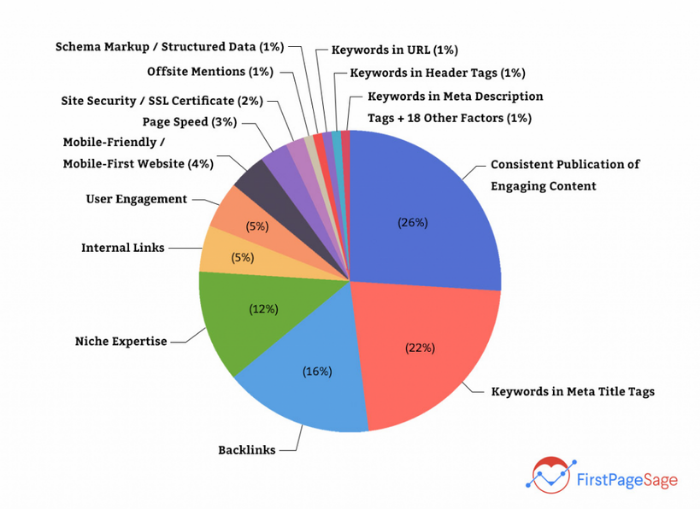
Generally, when potential customers find their long-tail keyword search terms in your post, it will increase engagement. It’s about matching user intent.

Longtail keywords can help you achieve different goals, so you should define what you want to achieve before starting writing.
2. Create Buyer Personas to Help You Understand User Intent
If you’re going to match user intent, you’ve got to understand the people searching for your products/services (your buyer personas).
Without a clear picture of what your buyer personas look like, you’re just guessing at what people search for and how they search for it. Instead, you want to have a clear image of how your target audience searches for information, why they look for it, and how you can respond to their queries.
Creating buyer personas is a simple way to help you respond effectively. It’s a representation of a specific ideal reader you’d like to attract to your blog or site.
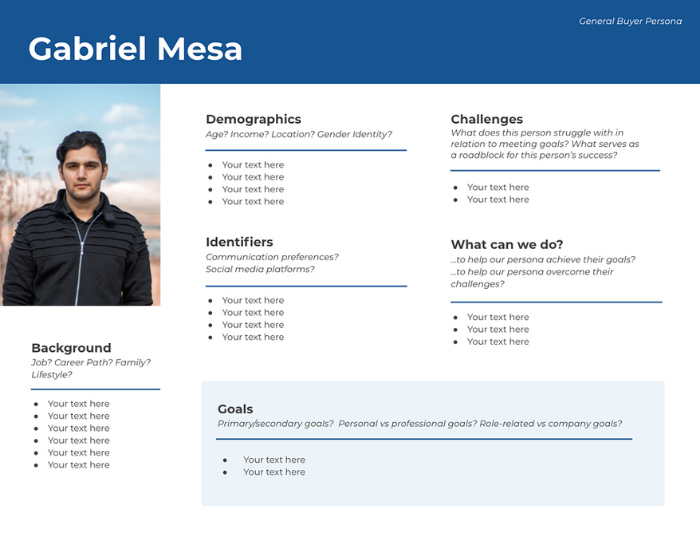
Put yourself in the shoes of your buyer persona and ask yourself what questions they have, what information they’re looking for, and how they search for it?
You need to understand how your audience searches and use this information to match user intent by integrating longtail keywords.
3. Research and Select Your Longtail Keywords
You have to be picky about your longtail keywords.
Longer variations of your keywords may have lower search volumes than head keywords, but their conversion rates are usually very high.
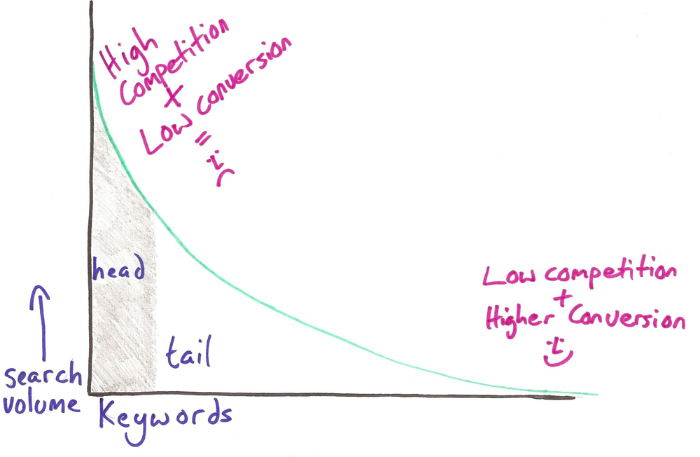
Let’s find those long-tail keywords right now.
Step 1: Go to Ubersuggest, type your main keyword (e.g., car insurance), and click the “Search” button:

Step 2: Click “Keyword Ideas” in the left sidebar:

Step 3: Choose your long-tail keywords from the results list, by identifying keywords with four or more words.
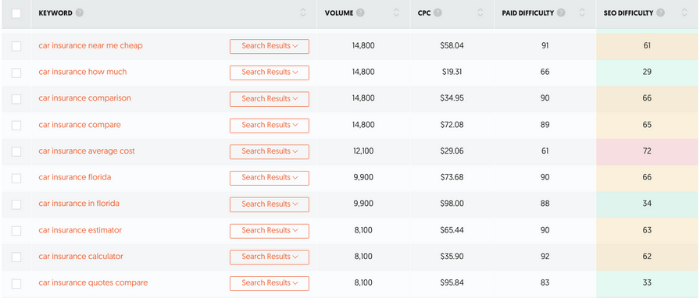
Step 4: Filter the results in search of high volume, low SD long-tail keywords:
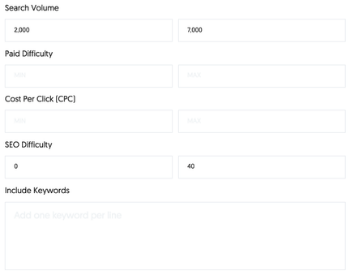
For this industry, which is highly competitive, I set the SEO difficulty to no greater than 40 while keeping the search volume in the 2,000 to 7,000 range. Here’s what you get:
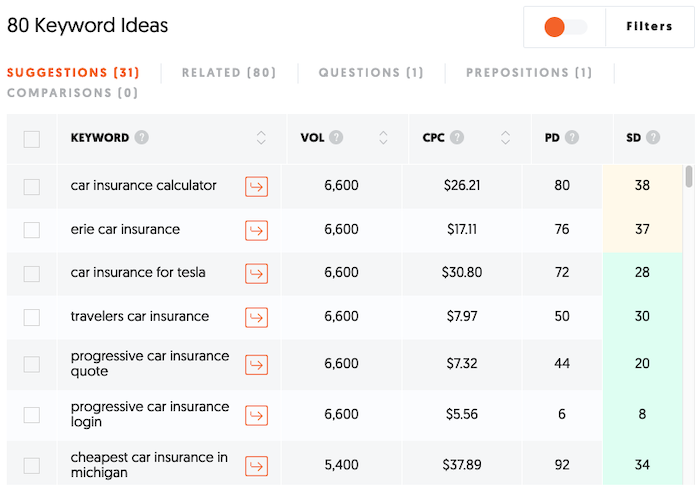
Not only are there 80 keywords meeting the criteria, but many of them are prime candidates. For example, “cheapest car insurance in Michigan” is desirable. Here’s why:
- 5,400 monthly searches are more than enough to move the needle (more on this below).
- A relatively low SD of 34 shows ranking on the first page is attainable.
- A CPC of $37.89 proves it’s a high converting keyword (typically, the higher the CPC, the better it converts).
So, if you decide to target “cheapest car insurance in Michigan,” the next step is clicking on that keyword. Doing so displays the following:
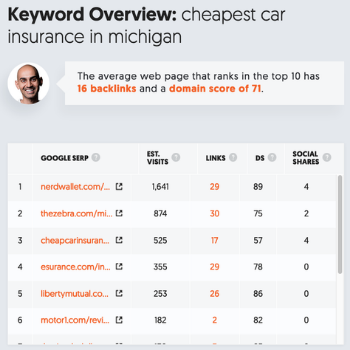
This is a list of the top search results for the keyword, complete with:
- URL
- estimated visits
- links
- domain score
- social shares
A few things stand out to me:
- Estimated visits per month for the top three spots are strong.
- The average number of backlinks of page one results is 16.
- None of the websites in the top five have done an outstanding job with social media.
In other words, this is a long-tail keyword you can win.
It’s important to remember that Google and the other search engines aren’t just about numbers, though. At its heart, Google is about the experience: giving people the information they need in a way they enjoy. Longtail keywords won’t get you where you want to go unless you understand user intent and can provide them with the experience they’re looking for.
This means your goal can’t just be to rank. It’s got to be to provide the user with the highest quality content that matches user intent.
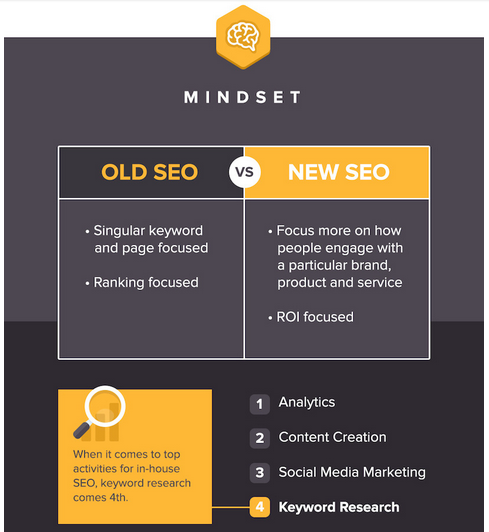
SEO requires caring about your users and solving their problems. This is why smart long-tail keyword use helps you with search engine results, not hurts you.
To maximize your use of keywords, focus on two to three keywords, and don’t stuff them into your content.
4. Write the Content
Your content is there to help your visitors answer questions and solve problems, and keywords firmly take a back seat to this.
Having done significant research, make sure you’re using your longtail keywords to demonstrate your content matches user intent.
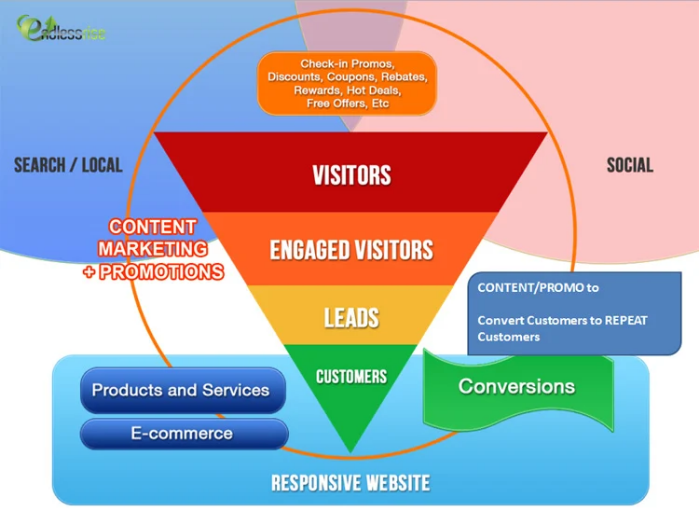
If you’re creating content matching user intent, you should be able to incorporate longtail keywords naturally. “Naturally” is the crucial element here.
Some marketers look at one keyword per 200 words as a good benchmark, but quality is far more important than quantity. For a 2,000-word article, I generally aim to use my keyword 10-20 times—but it’s not a hard and fast rule. With some articles, frequent use of both standard and longtail keywords flows naturally; for others, you won’t use them as much.
As long as your content is good and your context is clear, you usually don’t need to panic if your keyword only shows up less often.
Remember that titles and headings are essential parts of your content, so again, try to integrate your longtail keywords. This will also make it clear to the user that you match their intent, encouraging them to read on.
Again though, I can’t emphasize enough how important it is to be natural. In the early days of SEO, Google’s algorithms weren’t as sophisticated, and people did benefit from putting their keywords in at every opportunity. Today though, Google is super smart, and it’s focused on the value your content offers the user. If you’re keyword stuffing, you won’t get far.
Longtail Keyword Integration FAQs
Longtail keywords are keyword queries of generally four words or longer and can demonstrate high buyer intent.
Take the word “dogs” as your regular keyword. Longtail keywords might include “Labrador dogs for sale,” “How to look after a dog,” or “Why should I get a dog.”
You can target longtail keywords by creating valuable content answering people’s questions and helping them solve their problems.
Google is good at understanding semantics, which means it knows how words link together to create meaning. As a result, your longtail keywords don’t always have to be exact.
Longtail Keyword Integration Conclusion
Search engines want to see you provide your users with the best possible experience. To do this, you’ve got to understand your target audience and how they search.
Longtail keyword research should be a big part of your content marketing strategy. Successfully incorporating these keywords into your content will enable you to match user intent and give your visitors a great experience.
When you boost your traffic and engage users better by using the language they use to search, it can bring significant results for your website.
Have you had success with longtail keywords?

See How My Agency Can Drive Massive Amounts of Traffic to Your Website
- SEO – unlock massive amounts of SEO traffic. See real results.
- Content Marketing – our team creates epic content that will get shared, get links, and attract traffic.
- Paid Media – effective paid strategies with clear ROI.